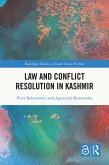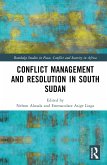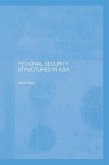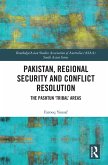The book discusses how over centuries, foreign powers have polarised and used the ethnic groups of Laos to support their own agendas, and how in spite of this, the Lao people have consistently managed to recreate the peace and harmony that support their social relationships, whether that is within groups or between many distinct groups. Through the development and use of appropriate grassroots conflict resolution structures that do not require a formal court system and exists outside the political arena, they have been successful in resolving conflicts within and across cultural groups. The book shows that the conflict resolution systems of Laos are embedded in the fabric of ordinary, everyday life, and operate independently of the hierarchical structures that dominate governing institutions.
Highlighting how peace continues to work its way into existence, through elaborate mediation systems and rituals that bring people together, this book will be of use to students and scholars of Southeast Asian Politics, Peace Studies and War and Conflict Studies.
Dieser Download kann aus rechtlichen Gründen nur mit Rechnungsadresse in A, B, BG, CY, CZ, D, DK, EW, E, FIN, F, GR, HR, H, IRL, I, LT, L, LR, M, NL, PL, P, R, S, SLO, SK ausgeliefert werden.
Kearran Sims, Western Sydney University, Contemporary Southeast Asia
"It presents a collection of chapters about different topics relevant to multidisciplinary studies that will help to expand our understanding of conflict resolution in Lao's PDR and also apply this knowledge to understand conflict resolution in other places in the world... The audience of the book will be academics, students, lawyers, humanitarian workers, peacekeepers and nonprofit organizations with an interest in Southeast Asian Studies, War Studies and Conflict Studies."
Patricia Ordóñez de Pablos, The University of Oviedo, International Journal of Asian Business and Information Management
"This volume successfully overcomes many of the limitations of academic studies by drawing on real examples and folktales from local communities in Laos. The book is highly effective in the way it explores concepts by first presenting a story or real example of a dispute, then analysing relevant features of the Laotian conflict resolution process, and finally explaining how such features are reflected in the example. A highly valuable body of research is presented here in clear and insightful ways, and Phetsamay Stobbe's book is sure to be widely used as a significant resource for both academics and practitioners in the field of conflict resolution."
SungYong Lee, National Centre for Peace and Conflict Studies, University of Otago, New Zealand









